Abstract
The effect of dissolved oxygen concentration on nitrogenase activity was studied in three species of photosynthetic bacteria. The O2 concentration in the cell suspension was measured with an O2 electrode inserted into the reaction vessel. Acetylene reduction by whole cells of Rhodopseudomonas capsulata, Rhodospirillum rubrum, and Chromatium vinosum strain D was inhibited 50% by 0.73, 0.32, and 0.26 microM O2, respectively. The inhibition of the activity by O2 in R. capsulata usually was reversed completely by reestablishing anaerobic conditions. In R. rubrum and C. vinosum the inhibition was only partially reversible. The respiration rate of R. capsulata was the highest of the three, that of R. rubrum was intermediate, and that of C. vinosum was lowest. R. capsulata and R. rubrum cells were broken after their acetylene reduction activity in vivo had been completely inhibited by O2, and nitrogenase was found to be active in vitro. A concentration of cyanide that did not affect acetylene reduction activity, but which inhibited 75 to 90% of the O2 uptake by whole cells of R. capsulata, shifted the O2 concentration causing 50% inhibition of nitrogenase activity from 0.73 microM to 2.03 microM. These results are in accordance with the assumption that within a limited range of O2 concentrations, the respiratory activity of the cells is enough to scavenge the O2 and to keep the interior of the cells essentially anaerobic. It is suggested that O2 inhibits nitrogenase activity by competing for a limited supply of electrons. When cyanide is present, respiration is slower but is adequate to keep the nitrogenase environment in the cell anaerobic. The lower respiration rate may allow a greater proportion of the electrons to be used for acetylene reduction.
Full text
PDF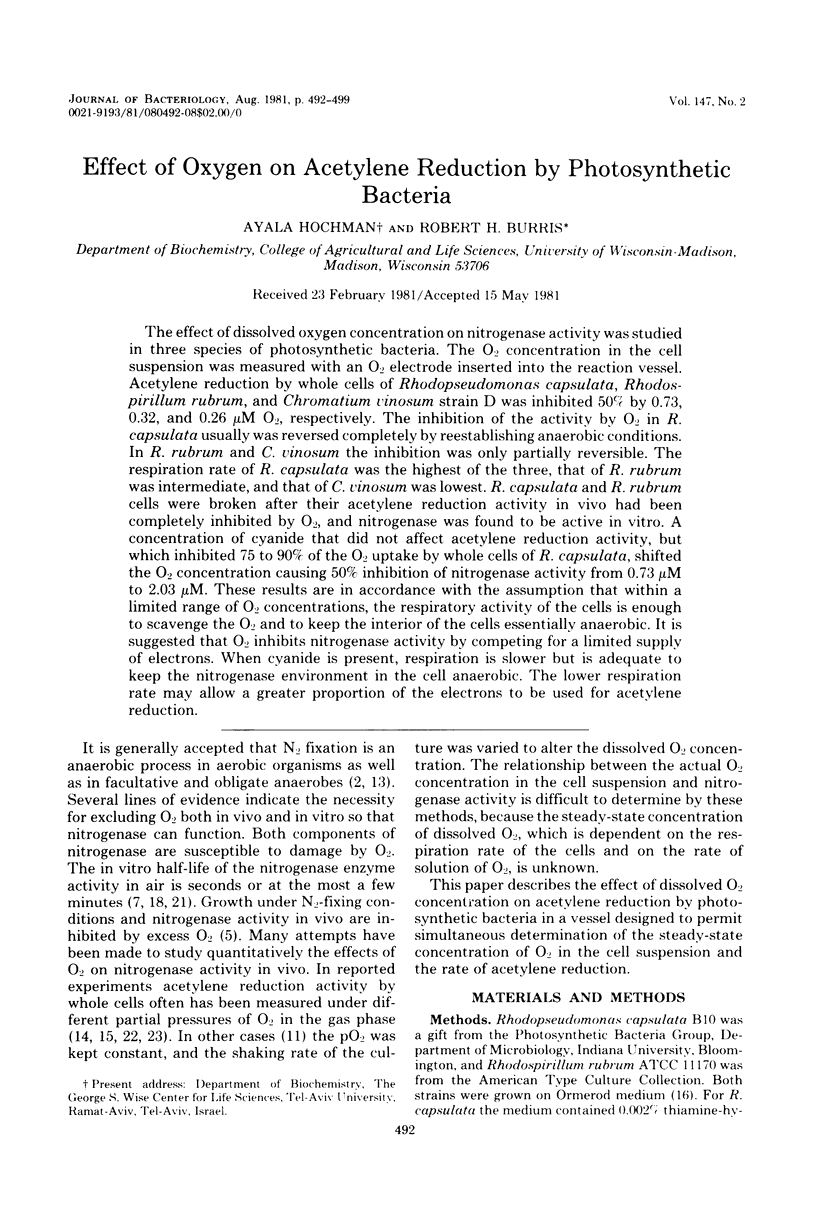
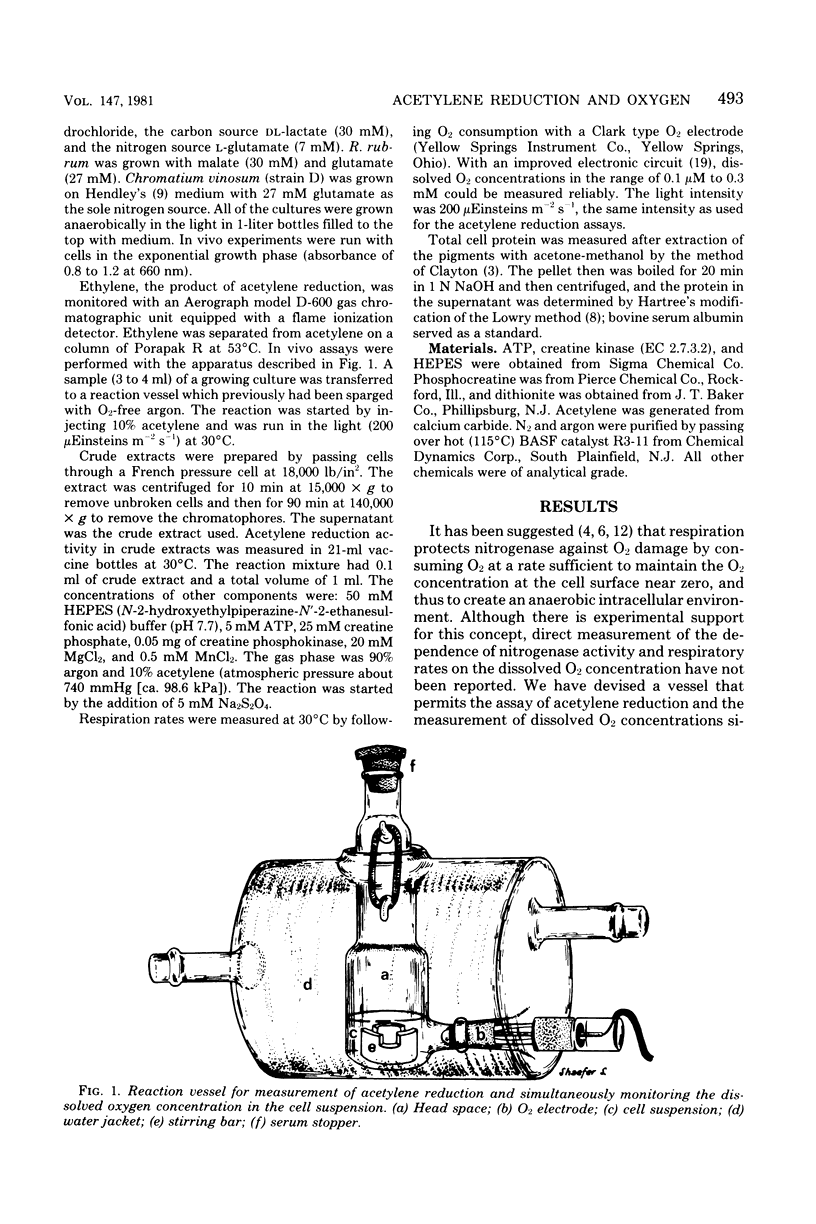
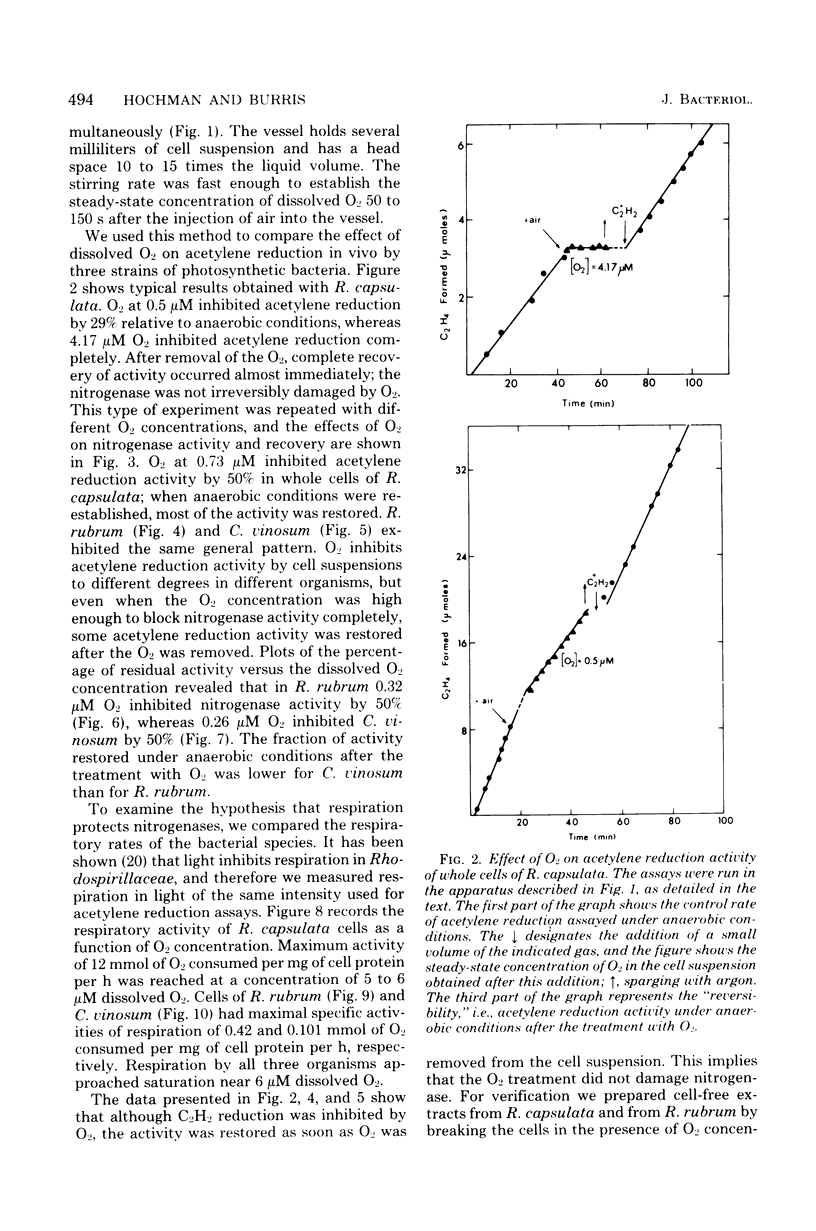
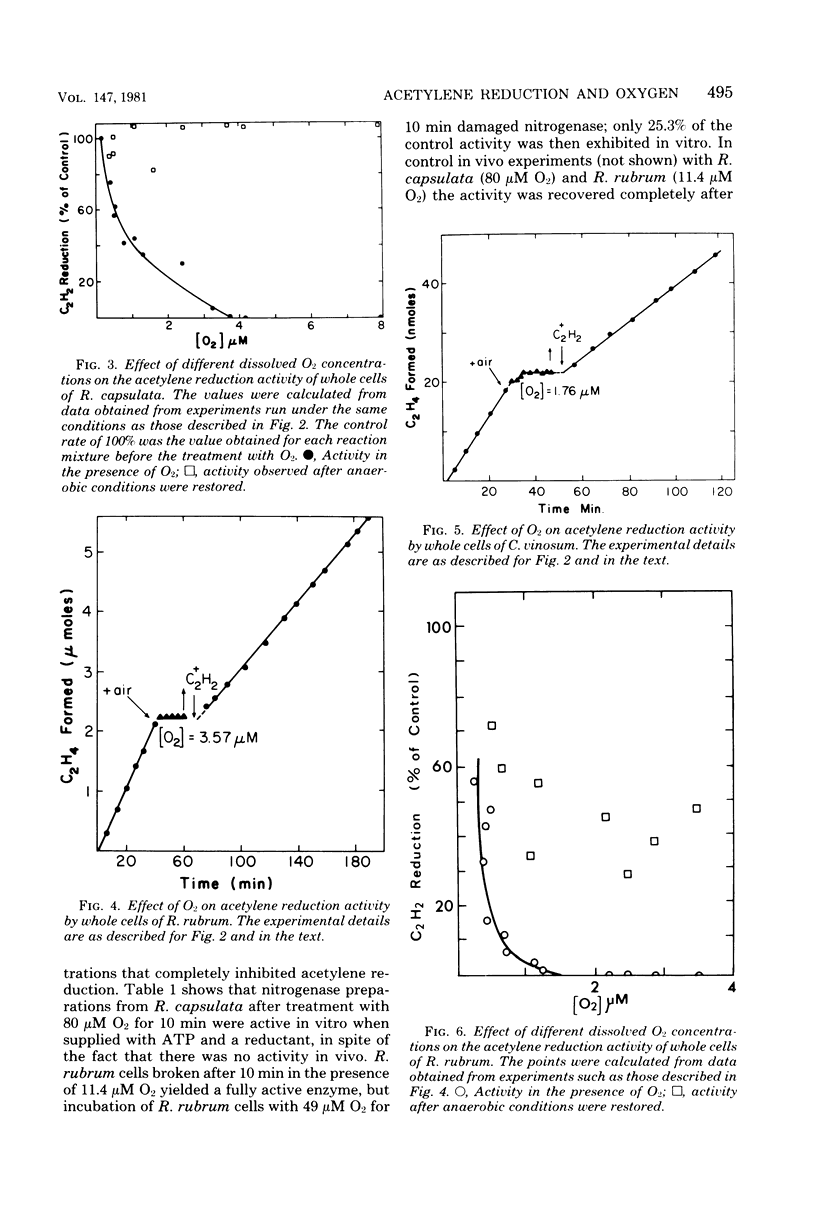
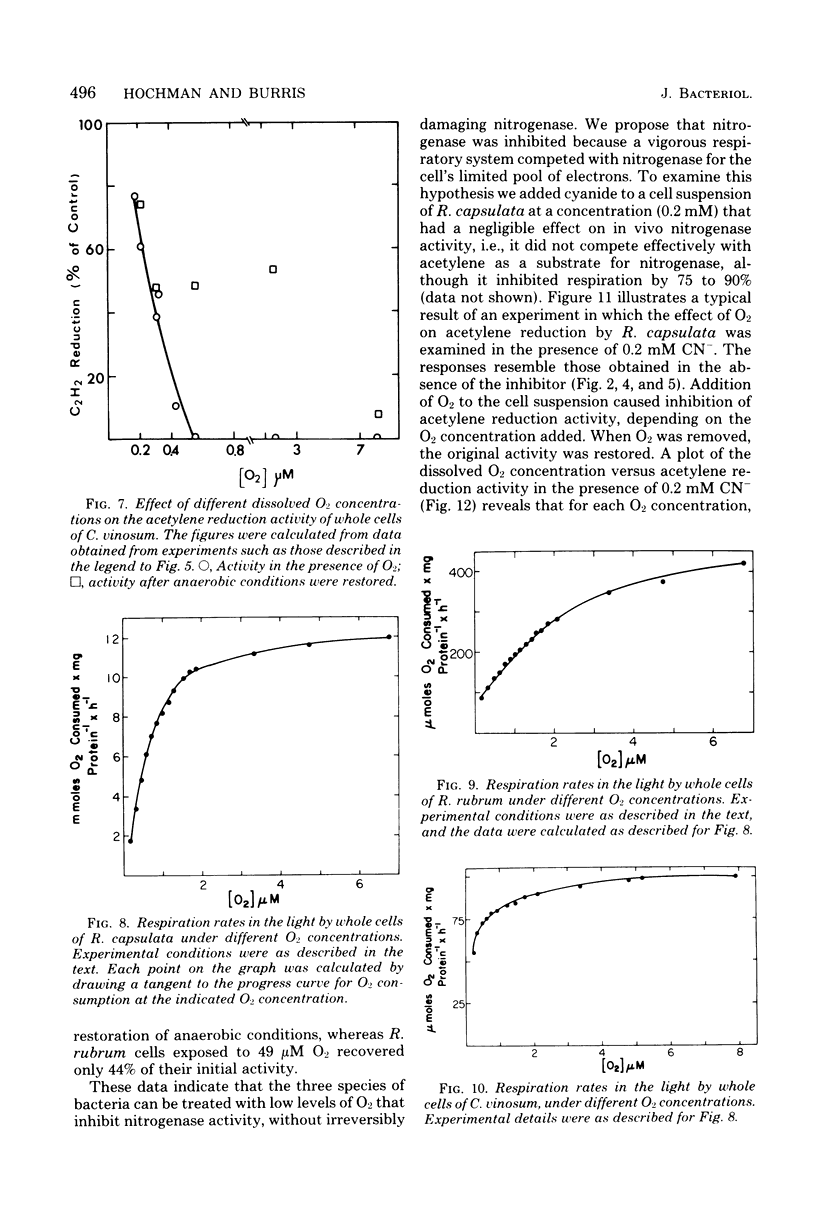
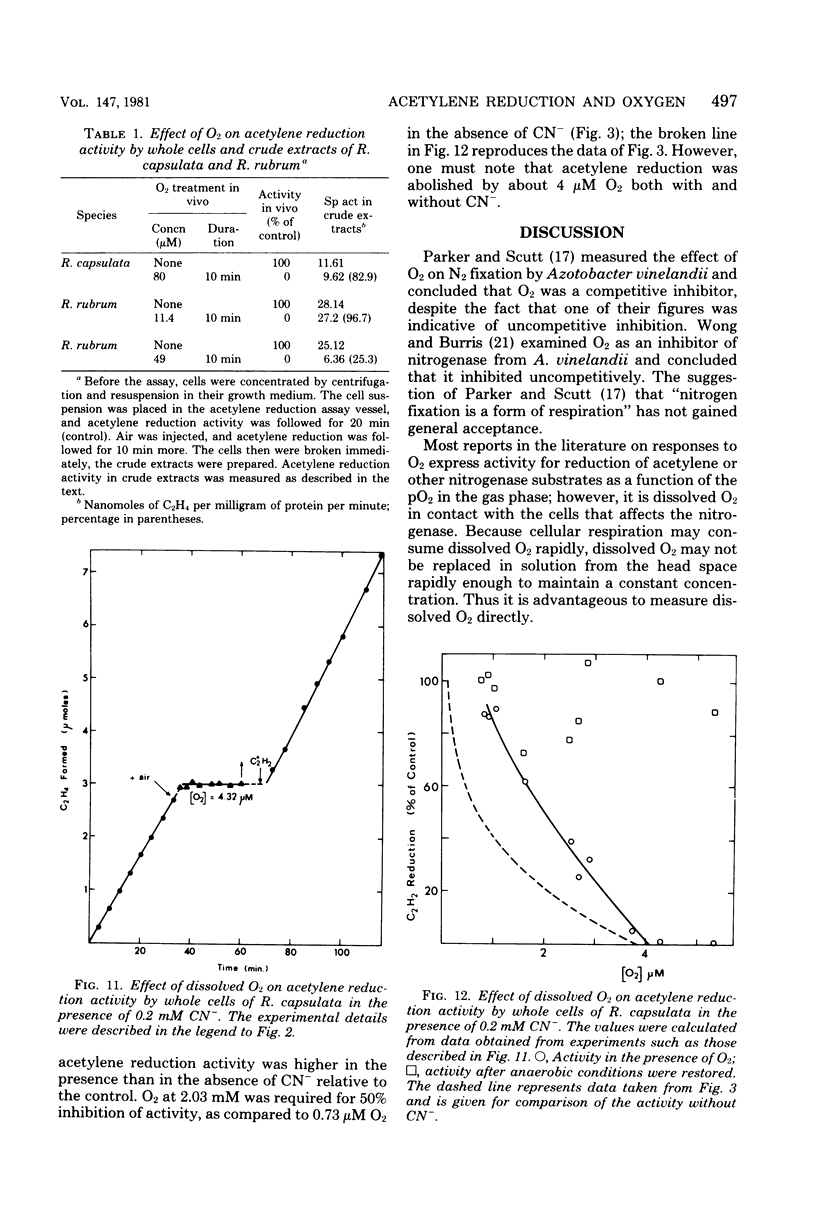
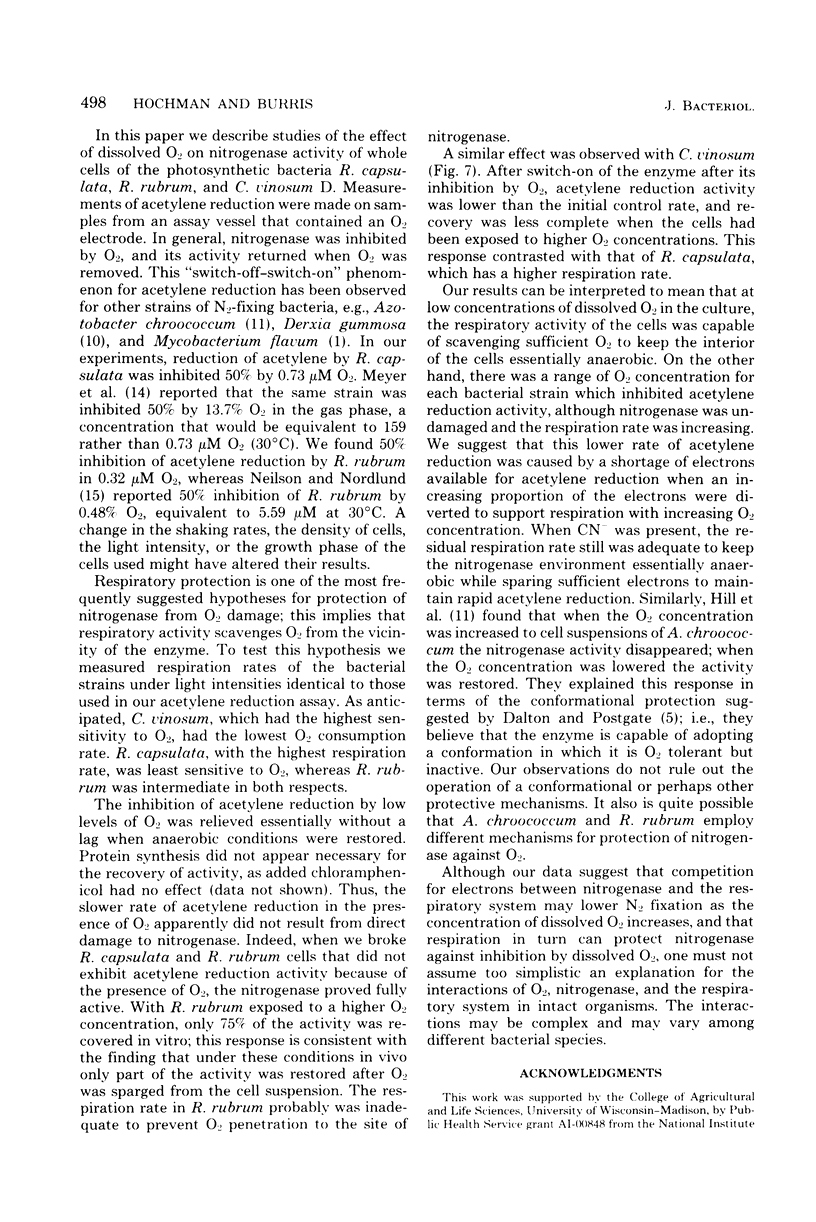
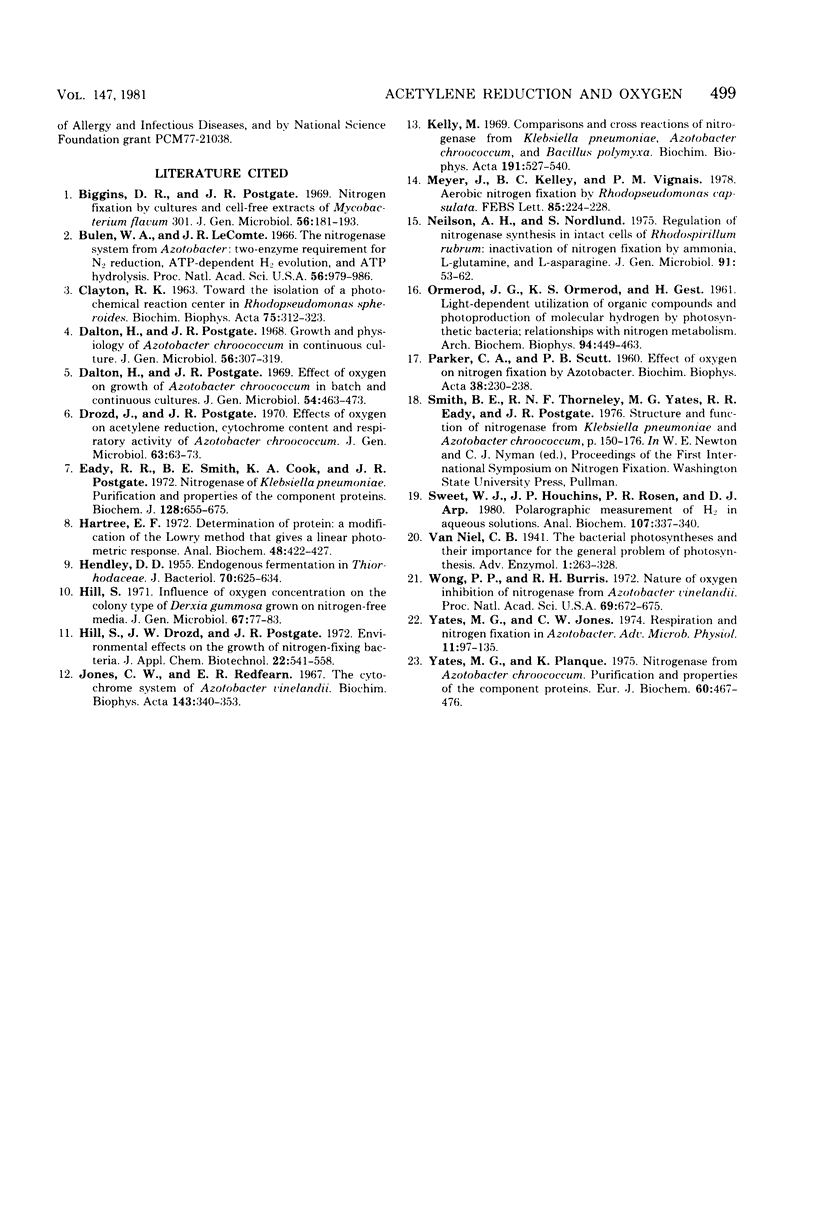
Selected References
These references are in PubMed. This may not be the complete list of references from this article.
- Biggins D. R., Postgate J. R. Nitrogen fixation by cultures and cell-free extracts of Mycobacterium flavum 301. J Gen Microbiol. 1969 May;56(2):181–193. doi: 10.1099/00221287-56-2-181. [DOI] [PubMed] [Google Scholar]
- Bulen W. A., LeComte J. R. The nitrogenase system from Azotobacter: two-enzyme requirement for N2 reduction, ATP-dependent H2 evolution, and ATP hydrolysis. Proc Natl Acad Sci U S A. 1966 Sep;56(3):979–986. doi: 10.1073/pnas.56.3.979. [DOI] [PMC free article] [PubMed] [Google Scholar]
- CLAYTON R. K. TOWARD THE ISOLATION OF A PHOTOCHEMICAL REACTION CENTER IN RHODOPSEUDOMONAS SPHEROIDES. Biochim Biophys Acta. 1963 Nov 29;75:312–323. doi: 10.1016/0006-3002(63)90618-8. [DOI] [PubMed] [Google Scholar]
- Dalton H., Postgate J. R. Effect of oxygen on growth of Azotobacter chroococcum in batch and continuous cultures. J Gen Microbiol. 1968 Dec;54(3):463–473. doi: 10.1099/00221287-54-3-463. [DOI] [PubMed] [Google Scholar]
- Drozd J., Postgate J. R. Effects of oxygen on acetylene reduction, cytochrome content and respiratory activity of Azotobacter chroococcum. J Gen Microbiol. 1970 Sep;63(1):63–73. doi: 10.1099/00221287-63-1-63. [DOI] [PubMed] [Google Scholar]
- Eady R. R., Smith B. E., Cook K. A., Postgate J. R. Nitrogenase of Klebsiella pneumoniae. Purification and properties of the component proteins. Biochem J. 1972 Jul;128(3):655–675. doi: 10.1042/bj1280655. [DOI] [PMC free article] [PubMed] [Google Scholar]
- HENDLEY D. D. Endogenous fermentation in Thiorhodaceae. J Bacteriol. 1955 Dec;70(6):625–634. doi: 10.1128/jb.70.6.625-634.1955. [DOI] [PMC free article] [PubMed] [Google Scholar]
- Hartree E. F. Determination of protein: a modification of the Lowry method that gives a linear photometric response. Anal Biochem. 1972 Aug;48(2):422–427. doi: 10.1016/0003-2697(72)90094-2. [DOI] [PubMed] [Google Scholar]
- Jones C. W., Redfearn E. R. The cytochrome system of Azotobacter vinelandii. Biochim Biophys Acta. 1967 Sep 6;143(2):340–353. doi: 10.1016/0005-2728(67)90088-6. [DOI] [PubMed] [Google Scholar]
- Kelly M. Comparisons and cross reactions of nitrogenase from Klebsiella pneumoniae, Azotobacter chroococcum and Bacillus polymyxa. Biochim Biophys Acta. 1969;191(3):527–540. doi: 10.1016/0005-2744(69)90346-5. [DOI] [PubMed] [Google Scholar]
- Meyer J., Kelley B. C., Vignais P. M. Aerobic nitrogen fixation by Rhodopseudomonas capsulata. FEBS Lett. 1978 Jan 15;85(2):224–228. doi: 10.1016/0014-5793(78)80460-8. [DOI] [PubMed] [Google Scholar]
- Neilson A. H., Nordlund S. Regulation of nitrogenase synthesis in intact cells of Rhodospirillum rubrum: inactivation of nitrogen fixation by ammonia, L-glutamine and L-asparagine. J Gen Microbiol. 1975 Nov;91(1):53–62. doi: 10.1099/00221287-91-1-53. [DOI] [PubMed] [Google Scholar]
- ORMEROD J. G., ORMEROD K. S., GEST H. Light-dependent utilization of organic compounds and photoproduction of molecular hydrogen by photosynthetic bacteria; relationships with nitrogen metabolism. Arch Biochem Biophys. 1961 Sep;94:449–463. doi: 10.1016/0003-9861(61)90073-x. [DOI] [PubMed] [Google Scholar]
- PARKER C. A., SCUTT P. B. The effect of oxygen on nitrogen fixation by Azotobacter. Biochim Biophys Acta. 1960 Feb 26;38:230–238. doi: 10.1016/0006-3002(60)91236-1. [DOI] [PubMed] [Google Scholar]
- Sweet W. J., Houchins J. P., Rosen P. R., Arp D. J. Polarographic measurement of H2 in aqueous solutions. Anal Biochem. 1980 Sep 15;107(2):337–340. doi: 10.1016/0003-2697(80)90393-0. [DOI] [PubMed] [Google Scholar]
- Wong P. P., Burris R. H. Nature of oxygen inhibition of nitrogenase from Azotobacter vinelandii. Proc Natl Acad Sci U S A. 1972 Mar;69(3):672–675. doi: 10.1073/pnas.69.3.672. [DOI] [PMC free article] [PubMed] [Google Scholar]
- Yates M. G., Planqué K. Nitrogenase from Azotobacter chroococcum. Purification and properties of the component proteins. Eur J Biochem. 1975 Dec 15;60(2):467–476. doi: 10.1111/j.1432-1033.1975.tb21025.x. [DOI] [PubMed] [Google Scholar]


